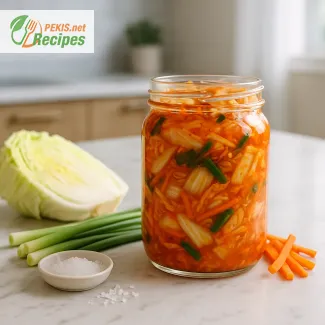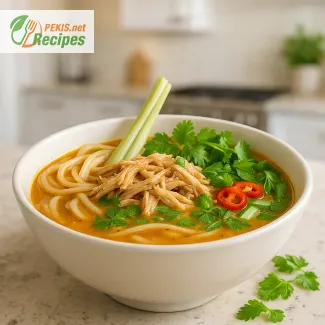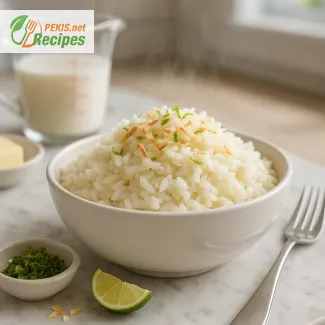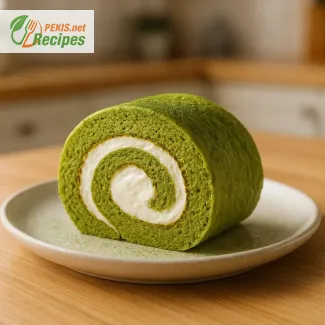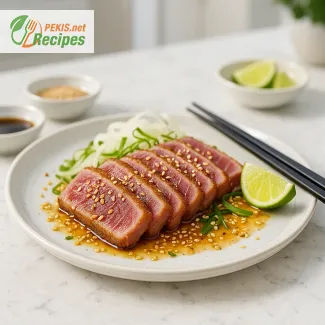
Discover the Essence of Indonesia Through a Bowl of Mie Ayam
A cultural icon turned comfort food, rich in flavor and soul
In the heart of Indonesia’s vibrant street food scene, Mie Ayam stands out as a beloved noodle dish that transcends borders. Known for its deeply seasoned chicken topping, perfectly springy egg noodles, and rich umami broth, Mie Ayam is more than just a meal — it’s a cultural experience in a bowl. Whether served at humble roadside warungs or celebrated in upscale Southeast Asian restaurants, this dish captures the true essence of Indonesian cuisine with every bite.
What makes Mie Ayam truly unforgettable is the delicate balance of its components. At its base, it features chewy wheat noodles, lightly tossed in aromatic soy-based oil, topped with savory braised chicken pieces, often infused with garlic, shallots, and sweet soy sauce (kecap manis). A ladle of piping hot chicken broth is served on the side or poured over the noodles, depending on the regional style. Garnishes like chopped scallions, fried shallots, and sometimes a touch of pickled vegetables add freshness and crunch, enhancing both texture and flavor.
This comforting dish is a reflection of Java’s culinary ingenuity. Although it shares similarities with Chinese chicken noodles, Mie Ayam evolved to suit Indonesian taste preferences, often incorporating local spices and a signature sweet-savory profile that sets it apart. Some variations even include mushrooms (mie ayam jamur) or are paired with crispy fried wontons, fish balls, or chili sambal for those who crave heat.
One of the reasons Mie Ayam continues to enchant food lovers around the world is its adaptability. It offers a perfect canvas for creative variations, yet the soul of the dish lies in its tender chicken, umami-laden sauce, and toothsome noodles that absorb every nuance of flavor. Whether enjoyed as a quick lunch, a late-night craving, or a nostalgic childhood memory, this dish never fails to deliver warmth and satisfaction.
In many Indonesian households, preparing Mie Ayam is a cherished ritual. The aroma of garlic sizzling in oil, the slow simmer of the chicken in spiced soy sauce, and the joy of pulling noodles to just the right texture all contribute to a rich sensory experience. It’s not just about assembling ingredients; it’s about honoring tradition and creating something that resonates deeply with the senses.
Even outside Indonesia, the popularity of Mie Ayam is growing rapidly. Its increasing appearance on international food blogs, restaurant menus, and social media feeds points to a growing global appreciation for authentic Indonesian flavors. With its harmony of taste, texture, and aroma, this dish continues to gain fans far beyond the archipelago.
Today, we bring you an authentic Mie Ayam recipe that stays true to its roots while being accessible for home cooks. You don’t need to fly to Jakarta to enjoy the savory goodness of this iconic dish — with the right ingredients and a little guidance, you can recreate this beloved street food right in your own kitchen. From the dark caramel soy sauce glaze to the homemade chicken broth, every element in this recipe is designed to transport your palate straight to the streets of Yogyakarta or Bandung.
Prepare to indulge in one of Southeast Asia’s most iconic noodle dishes — where every forkful of Mie Ayam delivers a story, a flavor, and a tradition that has stood the test of time.
1. Prepare the chicken broth
Place the chicken bones or wings in a large pot with 1.5 liters (6 cups) of water. Add sliced ginger, crushed garlic, salt, and white pepper. Bring to a boil, then reduce heat and let it simmer for about 30 minutes. Skim off any impurities for a clear broth. Strain and keep warm.
2. Cook the chicken topping
Cut the chicken thighs into small bite-sized pieces. Heat vegetable oil and sesame oil in a pan. Sauté shallots and garlic until fragrant. Add the chicken and cook until it turns opaque. Stir in sweet soy sauce, regular soy sauce, and oyster sauce. Add chicken stock, then simmer until the sauce reduces and slightly thickens — around 15 minutes. Set aside and keep warm.
3. Boil the noodles and vegetables
Bring water to a boil in a separate pot. Add egg noodles and cook according to package instructions (usually 2–3 minutes), then drain and rinse with cold water to stop the cooking process. Quickly blanch bok choy until just tender, around 30 seconds, and set aside.
4. Assemble the Mie Ayam
In each serving bowl, place a portion of cooked noodles. Drizzle with a small amount of sweet soy sauce and sesame oil to coat the noodles. Add a generous scoop of the braised chicken topping, followed by chopped spring onions and a sprinkle of crispy fried shallots. Place a few stalks of bok choy on the side. Serve with a bowl of the prepared chicken broth and optionally fried wontons and chili sambal.
Elevating Your Mie Ayam: Flavorful Twists on a Traditional Favorite
Smart techniques and ingredient upgrades to refine your Indonesian chicken noodles
While the traditional Mie Ayam recipe already captures the essence of Indonesian comfort food, there’s always room for creativity and improvement when preparing this dish at home. Small adjustments in ingredients, cooking methods, and presentation can turn a simple bowl of noodles into an extraordinary culinary experience. Whether you’re aiming to make it healthier, more aromatic, or better suited to your dietary preferences, these tips and tricks can help you personalize and elevate your homemade Mie Ayam without losing its cultural soul.
Choosing better-quality ingredients
Using fresh, high-quality ingredients can dramatically impact the taste and texture of your dish. While store-bought egg noodles are convenient, making your own or sourcing them from an Asian specialty store ensures a more authentic bite. Homemade chicken broth made from roasted bones and aromatic vegetables adds layers of depth compared to water-based instant bouillons. Look for free-range chicken thighs, which tend to be more flavorful and tender than their factory-farmed counterparts.
Fresh aromatics, such as garlic, shallots, and ginger, are crucial to building the flavor foundation. Instead of pre-minced garlic in a jar, use freshly chopped cloves and sauté them slowly to release their full aroma. Swapping ordinary soy sauce for naturally brewed soy sauce can also result in a more rounded, less salty taste.
Enhancing umami and aroma
One of the defining features of Mie Ayam is its umami-rich chicken topping. To deepen this umami flavor, consider adding a touch of dried shiitake mushrooms, rehydrated and finely chopped, into the braising sauce. Their earthy complexity marries beautifully with sweet soy sauce (kecap manis) and oyster sauce.
Another enhancement is the addition of fermented soybean paste (tauco), which adds a punchy, savory depth. Use it sparingly, as it’s quite potent, but it can dramatically increase the dish’s complexity when balanced correctly.
For a more fragrant bowl, add a few drops of toasted sesame oil just before serving. This simple finish can uplift the entire aroma profile, making the dish feel more refined.
Customizing the toppings
Beyond the classic chicken and scallion combo, toppings offer a chance to innovate. Try adding soft-boiled marinated eggs for an elevated presentation and a silky yolk that complements the noodles. Fried tofu cubes or tempeh are excellent vegetarian alternatives or additions that also provide protein.
You could also introduce texture with a handful of crushed peanuts or a small spoonful of pickled mustard greens, which give a tangy contrast to the sweet-savory chicken. For those who enjoy heat, a spoonful of homemade chili oil with Sichuan peppercorns can add a fiery, numbing dimension.
Making it healthier
Although delicious, traditional Mie Ayam can be quite high in sodium and saturated fat due to processed sauces and fried toppings. To create a lighter version, replace the standard egg noodles with whole wheat or rice noodles, which are often easier to digest. Use low-sodium soy sauce and reduce the quantity of oil during cooking.
Consider steaming the bok choy instead of blanching it in salty water, preserving its nutrients and natural sweetness. You can also use skinless chicken breast instead of thighs to lower fat content, although this might slightly reduce the richness of the topping.
Including more vegetables like bean sprouts, shredded carrots, or snap peas increases the dish’s fiber and vitamin content, making it a more complete and nourishing meal.
Common mistakes to avoid
One of the most frequent errors when preparing Mie Ayam is overcooking the noodles. Soft, mushy noodles ruin the texture and mouthfeel. To avoid this, boil them briefly and shock them in cold water to stop the cooking immediately.
Another misstep is over-seasoning the broth or the chicken. Since many sauces already contain salt and sugar, it’s essential to taste as you go and balance flavors with acidity from lime juice or mild vinegar when necessary.
Avoid reheating the dish in the microwave, as this can make the noodles soggy and unevenly warmed. Instead, reheat components separately and assemble fresh bowls for the best texture and flavor.
Why homemade always wins
While restaurant versions of Mie Ayam can be satisfying, making it at home gives you control over every ingredient and step. You can adjust the spice level, tweak the sweetness of the sauce, and ensure that all ingredients are fresh and tailored to your preferences. Most importantly, cooking at home creates a deeper connection with the food, turning every bowl into a story — not just a meal.
Cooking Mie Ayam in your own kitchen allows you to avoid preservatives, MSG, and other additives commonly found in commercial versions. You can also introduce family traditions or local ingredients, giving your version a signature twist that can’t be found anywhere else.
By mastering a few simple techniques and being mindful of your choices, you can transform a humble street food classic into a sophisticated dish worthy of being served at any family table or dinner gathering. Whether you stay true to the traditional preparation or explore new culinary paths, the essence of Mie Ayam — comfort, satisfaction, and soulful flavor — remains intact.
Allergens present
- Gluten (egg noodles, soy sauce, oyster sauce)
- Soy (soy sauce, sweet soy sauce, oyster sauce)
- Shellfish (possible in oyster sauce)
- Egg (egg noodles)
How to substitute allergens and gluten
- Use gluten-free noodles (e.g., rice noodles) to make the dish gluten-free.
- Replace soy sauce and kecap manis with tamari or coconut aminos for a gluten- and soy-free option.
- Use vegan oyster sauce to avoid shellfish.
- Choose egg-free noodles if allergic to eggs.
- Vitamin A: 3700 IU – Supports vision and immune system
- Vitamin C: 24 mg – Antioxidant and immune booster
- Vitamin B6: 0.7 mg – Vital for brain development and function
- Iron: 3 mg – Supports oxygen transport in blood
- Calcium: 60 mg – Important for bone health
- Potassium: 480 mg – Helps regulate blood pressure
- Magnesium: 45 mg – Aids in muscle and nerve function
- Flavonoids (from shallots and garlic): ~12 mg – Reduce inflammation and support heart health
- Selenium (from chicken): ~22 mcg – Protects against oxidative damage
- Capsaicin (if sambal is used): ~5 mg – Promotes metabolism and has anti-inflammatory effects
